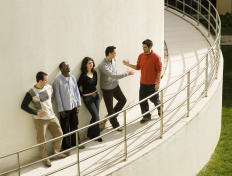Titulo Estágio
Evolutionary Creativity
Área Tecnológica
Sistemas Evol. e Comp.
Local do Estágio
CISUC
Enquadramento
The natural process of biological evolution is arguably the greatest creator we know. Over time, it has designed a wide variety of species which, in their own way, through creative and novel ways, attempt to solve the prevalent problem of survival in a difficult and dynamic environment, ultimately leading to the development of a variety of physical traits and behaviours.
Evolution can be regarded as a powerful process, capable of shaping and adapting complex characteristics. Therefore, while studying computational creativity, one should adopt an inclusive view, accounting for the notions of generative and adaptive creativity. While generative creativity deals with acts that are not necessarily beneficial to the system, adaptive creativity can be linked to the direct evolutionary advantages of the creative act.
For art-making activities to be part of human behaviour from prehistoric to modern times, they must play an important role in society. From a bio-evolutionary perspective, they must translate into evolutionary advantage. While the advantages brought by physical characteristics (speed, strength, immune systems) are more easily understood, various studies highlight the importance and social relevance of behaviours such as play, ritual and "making special" as well as the evolutionary value of art. Nevertheless, intelligence and creative are not a precondition to survival and evolutionary success. Various species show arguably little intelligence and creativity and are nonetheless highly successful. The following questions arise: In what circumstances does creativity provide and evolutionary edge? What are the preconditions for its emergence?
Various studies also contribute to the understanding of the role of sexual selection in the development of the brain, creativity, language and art as a possible result from the necessity of selecting and attracting suitable mating partners. While such explanations are convincing, they are hard to model and test experimentally.
Objetivo
During this thesis, we will contribute to the understanding of the role of sexual selection on the development of creativity and art through the extension of a-life environments that will allow their testing in silico. The environment should support the evolution of agents with different abilities, a number of design choices such as asexual, sexual and sexual with mating selection reproduction models as well as the emergence of social behaviours. This environment will then be applied on a number of tests to determine "if" and "under what conditions" do capabilities such as emotions, imagination and ultimately creativity provide an evolutionary advantage.
Plano de Trabalhos - Semestre 1
Step 1 - Revision of the Bibliography .
Step 2 - Determining the techniques to use and develop
Step 3 - Proof of concept and prototype development
Step 4 - Thesis and work plan proposal
Plano de Trabalhos - Semestre 2
Step 5 - Development of the platform adequate for the research plan of the proposal.
Fase 6 - Experimentation and Analysis.
Fase 7 - Writing of the Thesis.
Fase 8 - Scientific paper.
Condições
Strong skills in programming.
Will to communicate in English with other researchers is also important.
Other interesting skills include Complex Systems and Artificial Intelligence
Observações
A scholarship is available. This dissertation occurs in the scope of an european project FP7 ConCreTe. As such the student will have the opportunity to interact and collaborate with other researchers from UC and other european institutions involved in the project.
Orientador
Penousal Machado e António Leitão
machado@dei.uc.pt 📩
